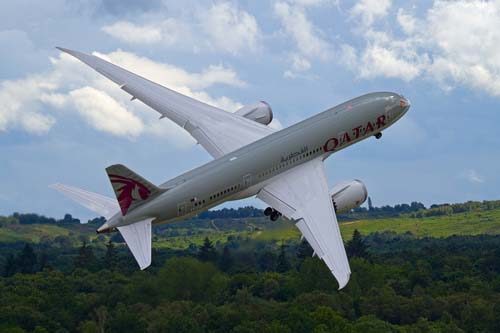
Qatar’s national carrier has announced that it is grounding its fleet of five Boeing 787 Dreamliner aircraft following concerns about the safety of the plane’s batteries.
In a statement which has just been released, Qatar Airways Chief Executive Officer Akbar Al Baker says:
“Safety remains the number one priority for Qatar Airways. We ensure all our aircraft meet the most stringent safety standards and this will not be compromised in any way. In light of recent events surrounding the Boeing 787 Dreamliner worldwide, we are actively working with Boeing and the regulators to restore full customer confidence in the 787. Qatar Airways will resume 787 operations when we are clear that the aircraft meets the full requirements of the Airworthiness Directive and our standards which assure the safety of our passengers and crew at all times.”
Qatar Airways’ decision follows a directive from the Federal Aviation Authority in the USA to ground all American operated Dreamliners pending a safety inquiry.
“As a result of an in-flight, Boeing 787 battery incident earlier today in Japan, the FAA will issue an emergency airworthiness directive (AD) to address a potential battery fire risk in the 787 and require operators to temporarily cease operations,” the FAA said in a statement yesterday.
Earlier today the European regulator, EASA, followed suit, grounding the only 787 fleet in Europe, which belongs to Polish airline LOT.
787 operators in India and Chile have also grounded their aircraft in response to the FAA’s directive.
Qatar Airways’ 787s currently fly to London, Zurich, Munich, and some intra-Gulf routes.
The airline says that it will do its utmost to assist passengers whose flights are cancelled as a result of the grounding:
“Qatar Airways would like to express our sincere apologies to passengers booked on our 787 flights, but we are sure they will understand our concerns in view of recent events with other 787 operators around the world. Our staff are assisting all affected passengers to be accommodated on other flights to get them to their final destination with minimum inconvenience”.
Thoughts?
Credit: Photo by RS Deakin







